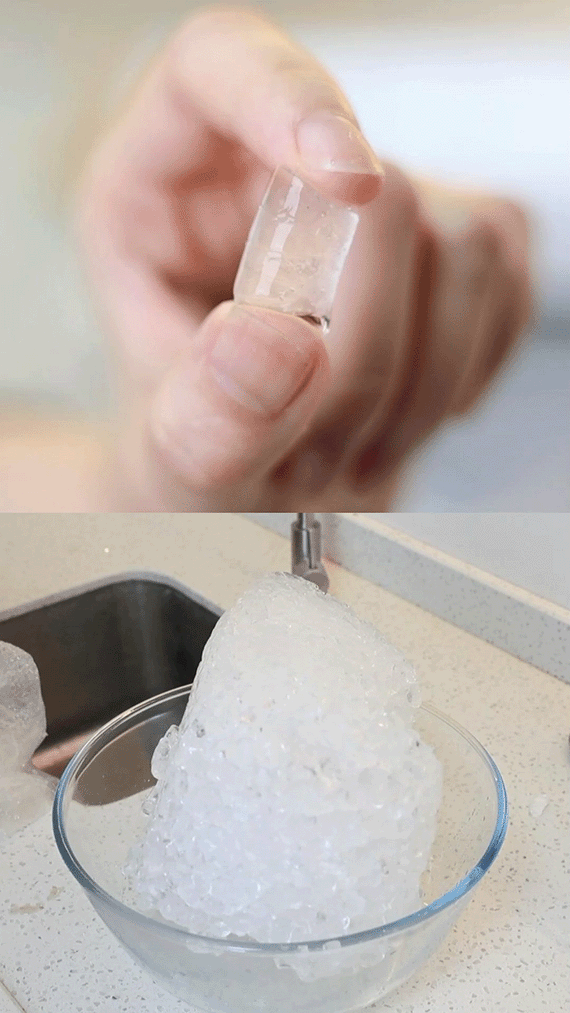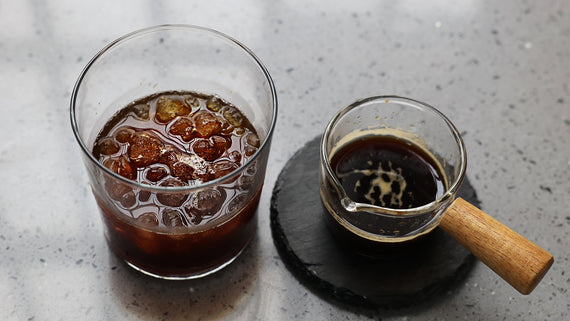Preventing Ice Contamination - Is Your Ice Contaminated?
Preventing Ice Contamination - Is Your Ice Contaminated?
Most people don't give ice much thought. It's just something that comes out of the ice maker, right? Well, not exactly. If ice is made with dirty water, it can contaminate the ice and cause food poisoning or other illnesses. If ice is stored in a dirty container, bacteria can grow. Ice could be pretty dangerous if made or stored incorrectly.
What is ice contamination?
Ice contamination is a severe problem in the food industry. In fact, it's one of the leading causes of foodborne illness. Ice can become contaminated with bacteria, viruses, or other microorganisms that can make you sick.
Several things can cause ice contamination, such as
- Water source
- Dusty/dirty table surfaces
- Ice handling
- Dirty ice maker
Contaminated ice can spread these pathogens to people who consume it, particularly if the ice is used in drinks.
In some cases, contaminated ice cubes can also lead to cross-contamination, which is when bacteria are transferred from one surface to another, resulting in people's health and safety being at risk.
Pathogens in the food industry
According to Food and Drug Administration(FDA), ice can be defined as food. Some prevalent pathogens in the food business are capable of passing on an ice cube and infecting someone.
Foodborne infections such as norovirus and E. coli are common in the food business. Both are frequently transmitted when food handlers do not adequately wash their hands before handling food, particularly after using the restroom. Imagine if a waiter in a restaurant had dirty hands and made you an iced drink. There's a good chance the ice is contaminated. So, ice may be infected if you see it with a strange color, pungent smell, or strange taste.

Photo Credit: cdc.gov / Norovirus
How are ice makers contaminated?
Most ice makers are contaminated with bacteria, mold, and other microorganisms. These contaminants can cause illness. Here are a few ways that contaminants can get into your ice maker:
- If we take the ice directly by hand, the ice and ice machine may be contaminated.
- Contaminants can also be introduced into the ice maker through the water supply.
- Bacteria can multiply in the ice maker if it isn't cleaned regularly.
When contaminants enter an ice machine, they can cause various health problems, including gastrointestinal illness, respiratory infections, and skin infections. These health problems can be serious and even life-threatening, so it is important to take steps to prevent contaminants from entering your ice machine.
How to prevent the contamination of ice?
One way to prevent ice contamination is to use an ice machine with a water filter. The filters will remove impurities from the water before it is used to make ice. Or we can use purified water in the ice machine, meaning that the water used to make ice is free of contaminants. The water is usually filtered and distilled before it is used in the machine. We need to ensure the water is safe and clean to avoid ice contamination.
Another way ice can become contaminated is if it comes into contact with dusty or dirty surfaces, such as countertops or cutting boards, that have not been adequately cleaned.To prevent this, make sure to clean all surfaces that the ice will come into contact with before using them.
Next, ice handling is a potential source of cross-contamination and needs to be taken seriously in any food service operation. People who do not handle the ice in proper sanitary conditions may contaminate the ice. Hands touch various surfaces that may carry diseases, so we should always wash our hands before handling ice, especially after using the bathroom. And we must use clean and sanitized utensils to ensure food safety, keep the ice in a clean container, and clean the ice basket and scoop of the ice maker. We ought to treat ice with the same degree of care as they do a piece of steak.

Photo Credit: cfs.gov.hk
Lastly, if you are getting ice from a public ice machine, be aware if the ice is clean. Or if you have ice maker, bring your ice from home, at least you are sure your ice maker is clean, so your ice will also be clean.
Remember to store ice properly after the completion of the ice making. If ice is not stored correctly, the ice will also be contaminated. So be sure to reserve your ice in a clean, dry container and keep it away from potential contaminants, such as raw meat or poultry.
If you suspect that your ice has been contaminated, throw it out and clean the machine immediately. It is significant to clean your ice maker regularly and to follow the manufacturer's instructions for proper maintenance.
Conclusion
In short, it is essential to take measures to prevent ice contamination. Ice can become contaminated in some ways, including through contact with contaminated water, dirty surfaces, ice handling, or improper cleaning and maintenance of ice machines.
Use only safe and clean water sources when filling your ice maker. Store your ice in a clean, dry container and keep it away from potential contaminants. When handling ice, use clean and sanitized utensils. And finally, clean your ice maker regularly. If you are using ice from a public ice maker, buying ice from a convenience store, or drinking iced beverages in a restaurant, no matter how you get the ice cubes, please pay attention to whether the ice cubes are clean; otherwise, discard them.
Reference
- cleaning and maintenance, contact with contaminated, contaminant, contaminate, contaminated ice, contaminated water, contamination, food industry, food poisoning, food safety, foodborne, foodborne illness, handle ice, ice contamination, ice cube, ice handling, ice machine, ice maker, ice making, norovirus, pathogen, prevent ice contamination, preventing ice, sanitize, scoop, wash their hands



